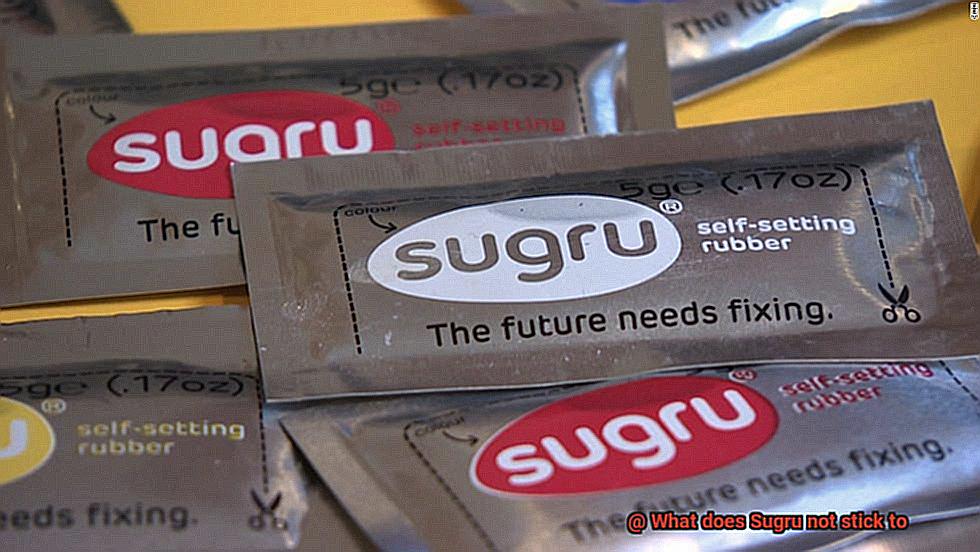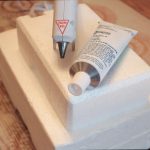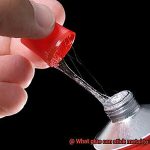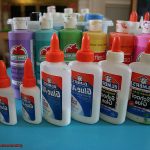We’re about to take you on a wild ride into the world of Sugru – the moldable glue that’s got DIY fanatics going crazy. If you haven’t heard of it yet, Sugru is like the superhero of fix-it materials. It can mend, tweak, and upgrade pretty much anything you can get your hands on.
Picture this: it’s like clay that morphs into rubber and sticks to almost any surface, turning ordinary objects into extraordinary masterpieces.
Before we go any further, let’s talk about what Sugru won’t stick to. Yep, even this magical goo has its limits. In this post, we’re gonna dig deep into those surfaces that give Sugru a run for its money.
So whether you’re a die-hard Sugru enthusiast or just curious about its sticky powers, buckle up and prepare to discover the untamed boundaries of this incredible adhesive.

What is Sugru?
Contents
Look no further than Sugru, the revolutionary moldable glue that has taken the DIY world by storm. Created by inventor Jane ni Dhulchaointigh, Sugru is a silicone-based material that starts off as a malleable substance and cures into a durable rubber-like form. In this article, we will explore the limitless possibilities of Sugru and how it can be used to tackle a wide range of projects.
Versatile Bonding Abilities:
Sugru’s exceptional adhesive properties make it the perfect solution for bonding materials like metals, ceramics, glass, wood, plastics, fabrics, and even some rubbers. Whether you’re fixing a broken item, creating custom grips or handles, sealing gaps or cracks, or enhancing the durability of everyday objects, Sugru has got you covered. Its reliable bond stands up to everyday wear and tear both indoors and outdoors.
Resilience in Challenging Conditions:
Not only is Sugru versatile, but it is also resilient in challenging conditions. It is resistant to water and high temperatures up to 180°C (356°F), making it ideal for use in kitchens or bathrooms where moisture and heat are common. Additionally, Sugru remains flexible after curing, allowing it to withstand movement and vibrations without losing its bond. Say goodbye to cracked phone chargers or loose tiles.
Limitations to Keep in Mind:
While Sugru is an exceptional adhesive for most materials, there are a few limitations to consider. It does not adhere well to certain plastics with low surface energy like polypropylene (PP), polyethylene (PE), and Teflon (PTFE). To improve adhesion on these surfaces, roughening or using adhesion promoters may be necessary. Similarly, Sugru may struggle to stick to silicone rubber, oily or greasy surfaces, certain metals like aluminum and stainless steel, specific fabrics and textiles, as well as glass. Testing on a small area is always recommended before committing to a larger project.
What Surfaces Does Sugru Not Stick To?
From metals to ceramics, plastics to wood, it seems there’s nothing this super adhesive can’t conquer. However, even the mightiest of glues has its limitations. In this article, we’ll explore the surfaces that may put up a fight against Sugru, equipping you with the knowledge needed to tackle your next DIY project with confidence.
Non-Stick Surfaces:
Smooth and sleek surfaces like Teflon and silicone pose a challenge for Sugru’s adhesive properties. The lack of texture on these non-stick materials creates a barrier that prevents Sugru from establishing a strong bond.
Oily or Greasy Surfaces:
Surfaces coated in oils or grease can hinder Sugru’s effectiveness. These slippery substances act as a shield between the adhesive and the surface, reducing its ability to create a reliable bond.
Water-Exposed Surfaces:
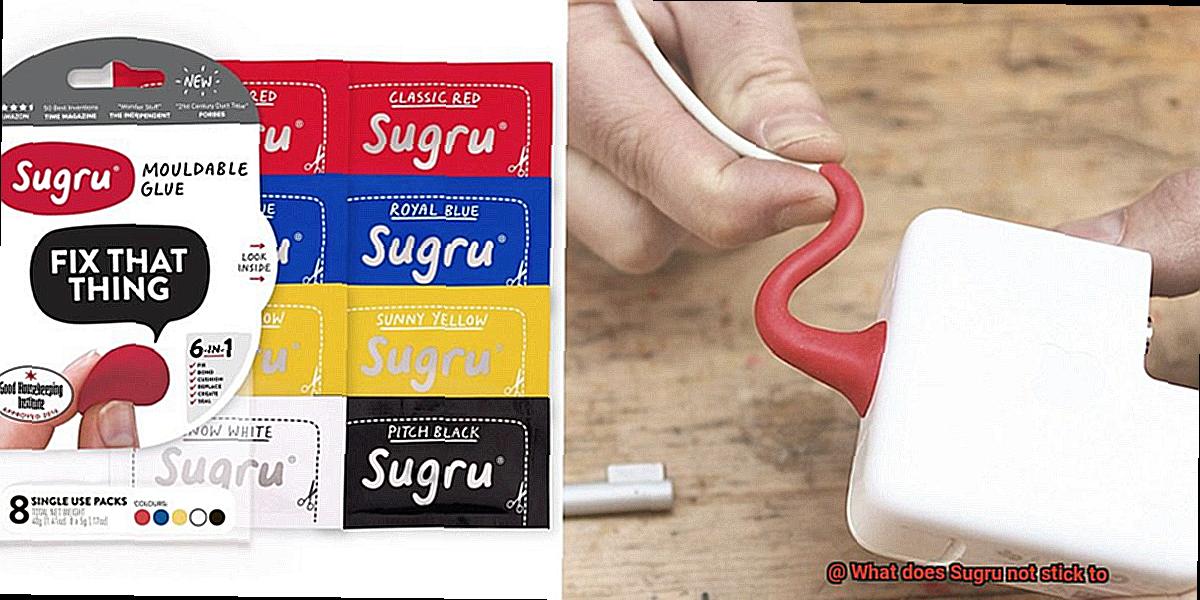
While Sugru is water-resistant once fully cured, surfaces constantly exposed to water or moisture may pose challenges during the bonding process. Prolonged exposure to water can weaken the bond over time.
Smooth or Glossy Surfaces:
Glass or certain plastics with smooth or glossy finishes lack the necessary grip for Sugru to adhere effectively. It is recommended to lightly sand or roughen these surfaces before applying Sugru to enhance its bonding capability.
Low-Energy Rubber:
Certain types of rubber with low surface energy may not bond well with Sugru. Testing a small area beforehand ensures optimum results when working with these materials.
Extreme Temperature Conditions:
During the curing process, extreme heat or cold can impact Sugru’s ability to bond effectively. While it can withstand a wide range of temperatures once cured, extreme temperature conditions during bonding may compromise its adhesive strength.
Powdery or Dusty Surfaces:
Surfaces covered in loose particles, such as powdery or dusty materials, can interfere with the bonding process and compromise the strength of the bond. Proper cleaning and preparation are essential before applying Sugru.
Polyethylene and Polypropylene Plastics
Imagine a world without the miraculous bonding capabilities of Sugru, where even the most tenacious adhesive fails to adhere to certain materials. Polyethylene and polypropylene plastics, renowned for their durability and flexibility, present an intriguing challenge when it comes to adhesion.
In this comprehensive exploration, we will unravel the mysteries behind these two plastics, delve into their unique properties, and discover potential solutions to overcome the sticky situation they pose.
Unraveling the Properties:
Polyethylene and polypropylene are smooth and non-porous plastics with remarkably low surface energy. This lack of roughness or chemical polarity makes it arduous for Sugru to establish a robust bond. Furthermore, these plastics exhibit chemical inertness, obstructing Sugru’s adhesive properties that rely on chemical reactions.
A Clash of Polarities:
The success of adhesion relies heavily on polarity. While Sugru brims with polar molecules eager to interact with other polar surfaces, polyethylene and polypropylene possess low polarity, severely limiting their interaction with the adhesive. This absence of attraction between the polar molecules in Sugru and the non-polar plastics further hampers adhesion.
Specialized Formulations:
Acknowledging this challenge head-on, Sugru has devised specialized formulations tailored explicitly for bonding to low-energy plastics like polyethylene and polypropylene. These formulations incorporate additives that enhance adhesion properties and bolster bond strength on these surfaces. However, it is important to note that even with these advancements, the bond may not be as formidable as when using Sugru on other materials.
Unleashing Potential Solutions:
For those grappling with the task of attaching or repairing objects made of polyethylene or polypropylene using Sugru, several potential solutions exist. Firstly, roughening the plastic surface with sandpaper amplifies surface area, providing a better grip for the adhesive. Alternatively, the application of a primer specifically designed for these plastics can optimize adhesion by preparing the surface for bonding.
Testing and Precautions:
As with any adhesive application, it is crucial to conduct a preliminary test of bond strength on a small, inconspicuous area before applying Sugru to a larger or more critical area. This ensures desired results are achieved and safeguards against potential disappointment or damage.
Silicone Rubber
In the world of adhesives, finding the perfect glue can sometimes feel like an impossible task. There is a hero in the glue world – Sugru. This incredible moldable silicone rubber adhesive has gained popularity for its strong bonding capabilities and versatility.
However, even superheroes have their limitations. In this blog post, we will dive into the fascinating world of silicone rubber adhesives and explore the challenges they face, as well as how to overcome them.
Silicone vs. Silicone:
One of the major limitations of silicone rubber adhesives, including Sugru, is their inability to effectively bond with silicone itself. The low surface energy of silicone rubber makes it difficult for other materials to form a strong bond with it. So, if you’re planning on sticking silicone to silicone, you might need to explore alternative adhesive options that are better suited for this specific task.
Oil and Grease:
Silicone rubber adhesives don’t play well with oily or greasy surfaces. The presence of oils or greases can hinder the adhesive’s ability to bond effectively. To ensure optimal results, make sure to thoroughly clean and degrease surfaces before applying silicone rubber adhesives.
Slippery Teflon Surfaces:
Teflon, renowned for its nonstick properties, poses another challenge for silicone rubber adhesives. With its extremely low surface energy, Teflon makes it difficult for these adhesives to create a strong bond. If you need to bond with Teflon surfaces, consider exploring specialized Teflon-compatible adhesives that are specifically designed to overcome this challenge.
Tricky Plastics:
Some plastics, such as polypropylene and polyethylene, have low surface energies that make them difficult to bond with silicone rubber adhesives. However, don’t lose hope. You can enhance adhesion by using sandpaper or primers specifically designed for these plastics. Testing on a small area beforehand is always a good idea to ensure success.
Dust and Debris:
Cleanliness is key when it comes to silicone rubber adhesives. Dusty or dirty surfaces can interfere with the adhesive’s ability to create a strong bond. Before applying the adhesive, ensure that surfaces are clean and free from debris to optimize bonding performance.
Temperature Troubles:
Extreme temperatures can also impact the adhesive properties of silicone rubber. High temperatures can cause the adhesive to soften or even melt, while very low temperatures can make it brittle and less effective in forming a strong bond. It is crucial to consider the temperature conditions and select an adhesive suitable for your specific needs.
Oily or Greasy Surfaces
Attempting to glue something to an oily or greasy surface can be incredibly frustrating. But fear not, because we have the solution: Sugru, the superhero adhesive.
While Sugru is a versatile adhesive that can bond to a wide range of materials, it may struggle with oily or greasy surfaces. However, with the right preparation and some handy tips, you can achieve successful adhesion even on these tricky surfaces.
Thoroughly clean the surface:
Before applying Sugru, it is crucial to ensure that the surface is free from any oils or grease. Give it a good scrub using a mild detergent or solvent that is compatible with the surface material. This will eliminate any barriers that could hinder the adhesive’s ability to bond.
Be aware of resistant oils and greases:
Certain types of oils and greases, like silicone-based lubricants or stubborn cooking oils, may put up a fight against Sugru’s adhesive properties. If you find yourself dealing with these substances, consider alternative adhesives or methods such as mechanical fasteners or clamping.
Consider using a primer:
In some cases, using a primer or bonding agent specifically designed for oily or greasy surfaces may be necessary. These primers create a more suitable surface for Sugru to adhere to, enhancing its bonding capabilities.
Mind the temperature:
Sugru performs best at room temperature, so make sure the surface is within this range. Extreme temperatures can affect the adhesive’s performance, so avoid applying Sugru to surfaces that are too cold or too hot.
Test before committing:
To ensure successful adhesion, always test Sugru on a small, inconspicuous area of the oily or greasy surface before applying it to a larger, more visible area. This will help determine if the adhesive will properly bond and give you peace of mind.
Certain Metals like Aluminum and Stainless Steel
Today, we embark on a journey to explore the differences between two captivating metals: aluminum and stainless steel. These intriguing materials present unique challenges when it comes to bonding with adhesives like Sugru, owing to their smooth surfaces and low surface energy.
We shall unravel the secrets behind this conundrum and unveil some nifty techniques that can pave the way to achieving a triumphant bond.
The Aluminum Odyssey:
Aluminum, with its sleek and polished surface, may seem impervious to most adhesives, including our trusty Sugru. The culprit behind this predicament lies in the oxide layer that naturally forms on aluminum, preventing adhesives from establishing a robust bond. Furthermore, aluminum’s penchant for oxidation and corrosion exacerbates the challenge. Hence, when employing Sugru on aluminum surfaces, it is essential to acknowledge that it may not deliver the enduring bond one desires.
The Stainless Steel Enigma:
Stainless steel – renowned for its durability and resistance to corrosion. However, its low surface energy poses a formidable obstacle for adhesives like Sugru. The chromium oxide layer that forms spontaneously on stainless steel acts as a protective barrier against corrosion but also impedes adhesive bonding. Consequently, the adhesive struggles to form a strong molecular bond with the metal surface, resulting in reduced adhesion strength.
Strategies for Triumph:
Though these challenges may appear daunting, there exist techniques that can enhance Sugru’s adherence to these metals. Here are two strategies that can tip the scales in your favor:
- Surface Roughening: Embrace the allure of texture. By utilizing sandpaper or a wire brush, you can create microscopic grooves and scratches on the metal surface. This augmented roughness offers increased surface area for the adhesive to grip onto, significantly improving the likelihood of successful adhesion.
- Primer Power: Enter the realm of primers. Employing a primer tailored for bonding metals such as aluminum and stainless steel can work wonders. These primers facilitate chemical bonding between the metal and adhesive, providing a superior surface for adhesion. By applying the primer prior to using Sugru, you amplify its sticking power on these formidable metals.
Specific Fabrics and Textiles
When it comes to bonding materials together, Sugru adhesive is a popular choice due to its versatility and strong adhesion. However, not all fabrics and textiles are compatible with this wonder adhesive. In this article, we will delve into the world of fabrics and textiles, exploring those that may pose challenges for Sugru and providing you with handy tips on alternative methods for gluing these materials together.
Synthetic Fabrics:
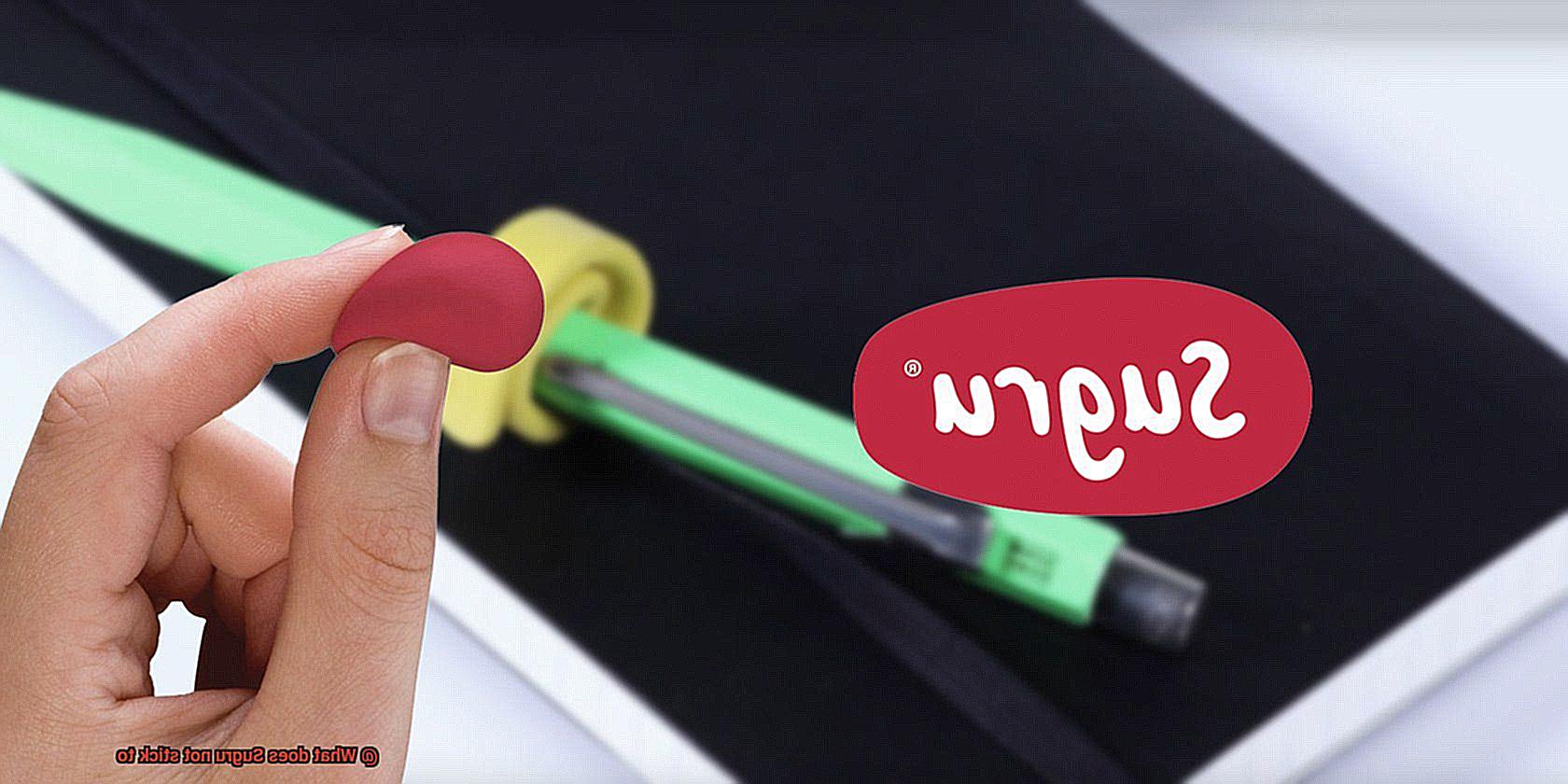
Smooth, sleek fabrics like nylon, polyester, and acrylic are commonly found in clothing and upholstery. However, their very smoothness can present obstacles for Sugru’s bonding properties. These fabrics may not provide enough grip for the adhesive to form a strong bond. In such cases, consider using fabric glue or heat bonding techniques as alternative options.
Water-Repellent or Stain-Resistant Coated Fabrics:
Outdoor clothing and upholstery often feature fabrics with water-repellent or stain-resistant coatings, ensuring durability and protection against the elements. Unfortunately, these coatings can also hinder Sugru’s adhesion. If you find yourself needing to repair or attach objects to these materials, sewing or specialized fabric adhesives may be more suitable alternatives.
Delicate Fabrics:
Luxurious silk, ethereal chiffon, and other delicate fabrics require extra care when it comes to adhesion. While Sugru’s strong bonding properties serve it well in most cases, they can be detrimental to delicate fabrics. The adhesive may cause damage or leave unsightly marks on these materials. It is advisable to avoid using Sugru on delicate fabrics altogether and opt for more gentle methods such as sewing or fabric-specific adhesive.
Fabrics with Loose Weaves or Textures:
Intricate lace, charming crochet, and other fabrics with loose weaves or textures can pose challenges for Sugru adhesive. Their irregular surface may not offer enough contact area for the adhesive to form a secure bond. In situations like these, sewing or specialized fabric adhesives are more suitable options to ensure a durable attachment.
Glass
Glass, a material both delicate and durable, is a wonder of human ingenuity. Its smooth and gleaming surface presents a challenge for adhesives like Sugru, which strive to bond with its non-porous nature. But fear not, my fellow adhesive enthusiasts, for I have delved into the depths of the scientific realm to uncover the secrets behind glass’s tricky nature.
The primary reason why Sugru may struggle to adhere to glass lies in the glass’s low surface energy. This means that it lacks a strong attraction for other substances, including our beloved adhesive. Like star-crossed lovers, they simply cannot form a lasting bond. This weak link can cause the adhesive to weaken over time, leaving you with a less-than-stellar solution.
But that’s not all. Moisture and oils on the surface of the glass can act as formidable opponents, creating a barrier that hinders the adhesive’s reach. It’s like trying to grasp a slippery fish with greased hands – an exercise in futility.
However, all hope is not lost. There are tricks of the trade that can enhance Sugru’s adhesion to glass. First and foremost, cleanliness is key. Give that glass surface a thorough scrubbing with soap and water or an alcohol-based cleaner. Banish any dirt, oils, or pesky fingerprints that may sabotage your bond.
For those seeking an extra grip, consider lightly sanding the glass or using a glass etching solution to roughen up the surface slightly. This will give Sugru something to hold onto, like a rock climber gripping a craggy cliff face.
But let me be clear – even with these precautions, Sugru may still not provide a permanent bond on glass surfaces. It is best suited for temporary or non-load-bearing applications on this mercurial material. If you require a stronger and more durable connection on glass, venture forth and explore other adhesive options designed specifically for this demanding task. Epoxy or silicone-based adhesives may hold the key to your glass-bonding dreams.
So there you have it, my adhesive aficionados. While Sugru is indeed a versatile adhesive with incredible powers, it may not be the hero we need for glass. Fear not, for armed with knowledge and alternative options, you can conquer any sticky situation that comes your way.
4WDGvBURMF0″ >
Conclusion
Sugru, the versatile adhesive, boasts impressive sticking power. It bonds to a wide range of materials, making it a go-to solution for countless DIY projects. But what about those few stubborn surfaces that refuse to cooperate? What does Sugru not stick to?
Well, rest assured that Sugru’s capabilities are vast, but even this mighty adhesive has its limits. There are certain materials and surfaces that simply won’t adhere to Sugru’s charm.
For starters, Sugru struggles to bond with oily or greasy surfaces. So if you’re trying to stick it to something slick and slippery, like an oil-coated metal surface or a greased up plastic handle, Sugru may not be your best bet.
Additionally, Sugru doesn’t play well with highly porous materials. If you’ve got a sponge-like surface or a super absorbent fabric, don’t expect Sugru to work its magic there. Its composition requires some level of solidity for optimal adhesion.
Furthermore, extreme temperatures can also pose a challenge for Sugru’s sticking power. If you’re dealing with scorching hot or freezing cold conditions, the adhesive properties may be compromised. So keep in mind the temperature limitations when considering your project.
Lastly, while Sugru is water-resistant once fully cured, it’s not completely waterproof during the curing process. So avoid submerging freshly applied Sugru in water until it has had ample time to set and cure properly.
In conclusion, while Sugru is an outstanding adhesive that can tackle most bonding challenges with ease, it does have its boundaries. Oily surfaces, porous materials, extreme temperatures, and premature exposure to water can all hinder its sticking abilities.
So, before embarking on your next DIY endeavor or repair project using Sugru, be mindful of these limitations and choose your surfaces wisely.

